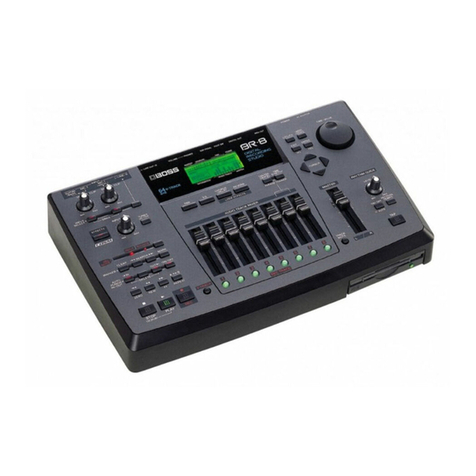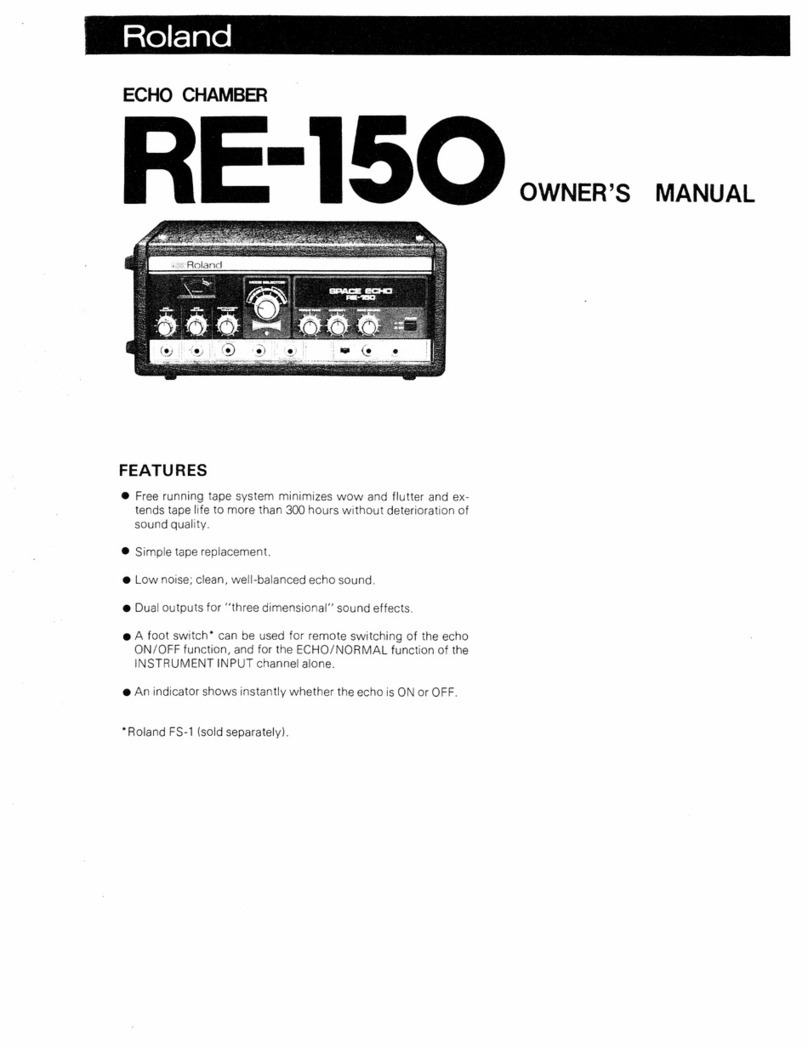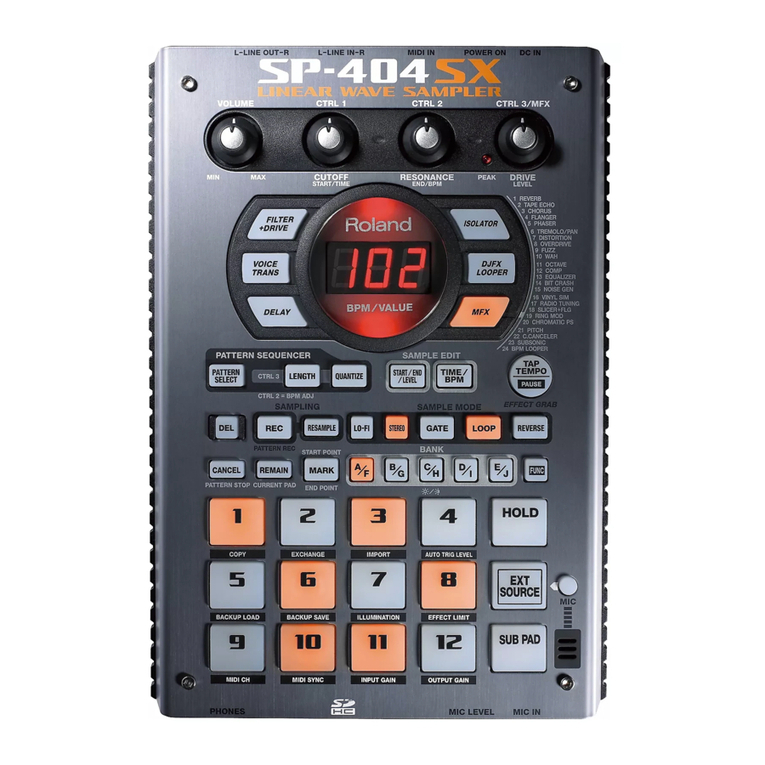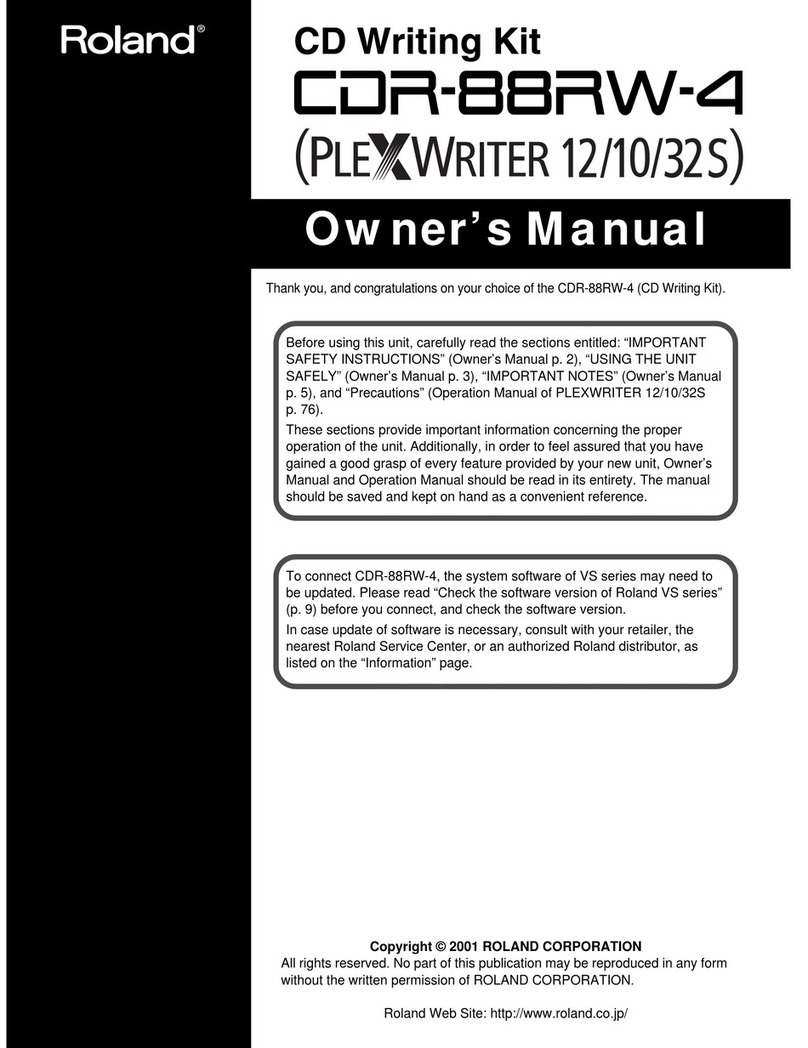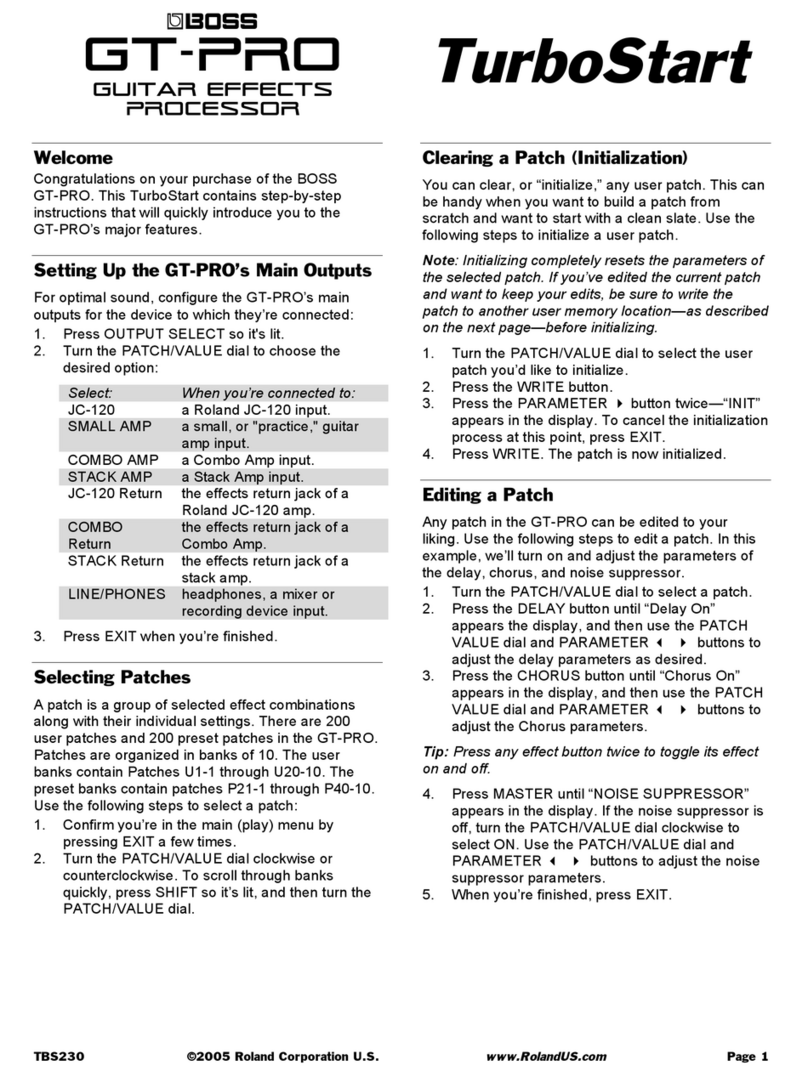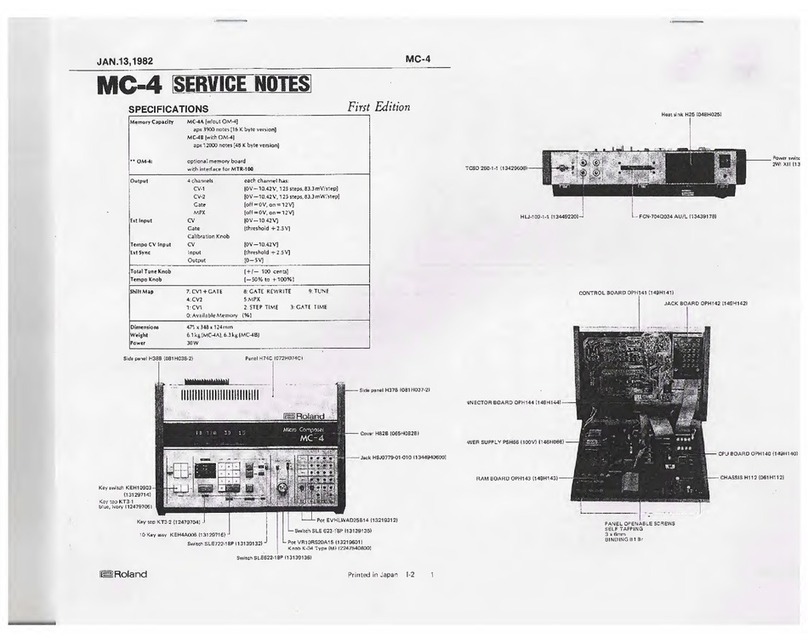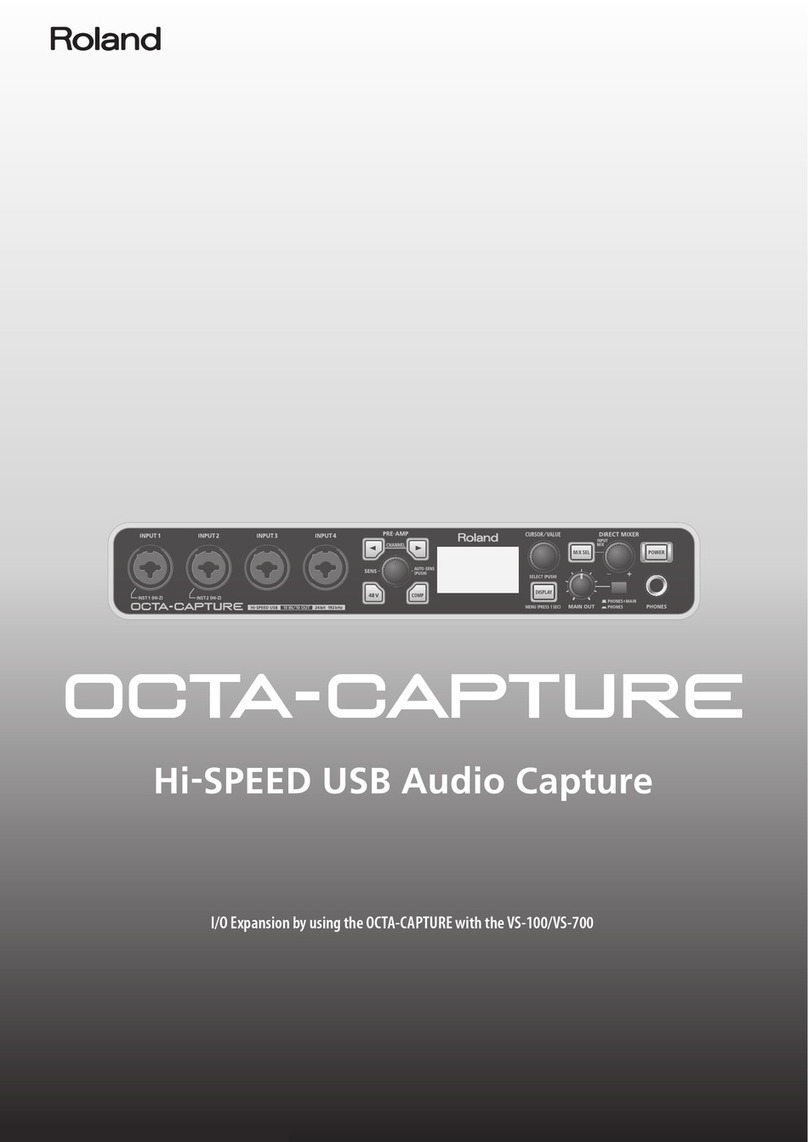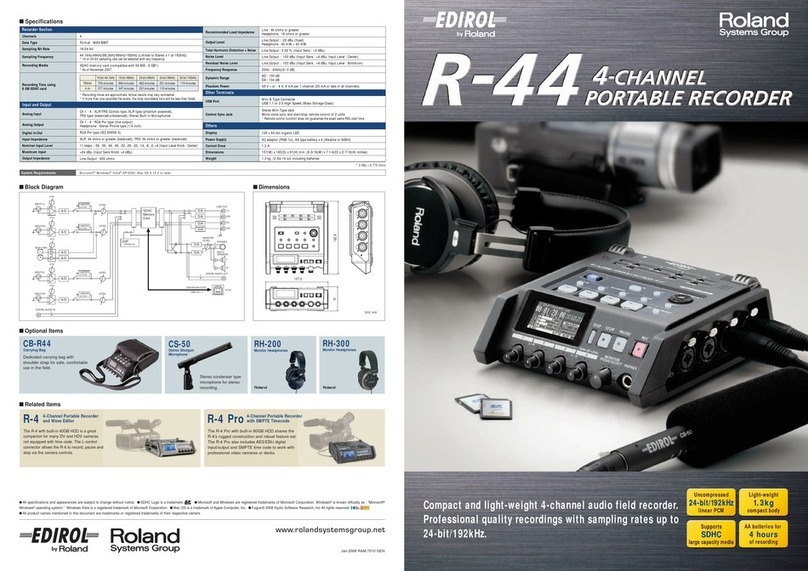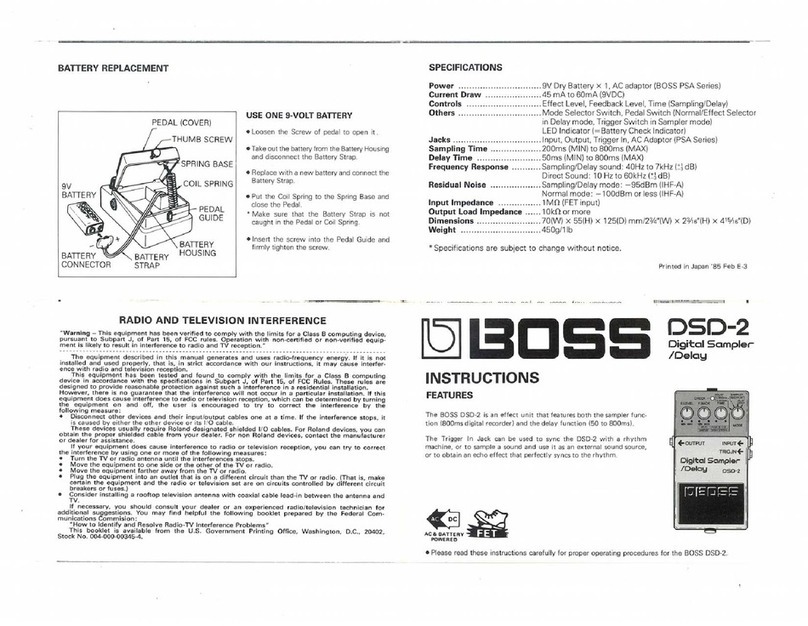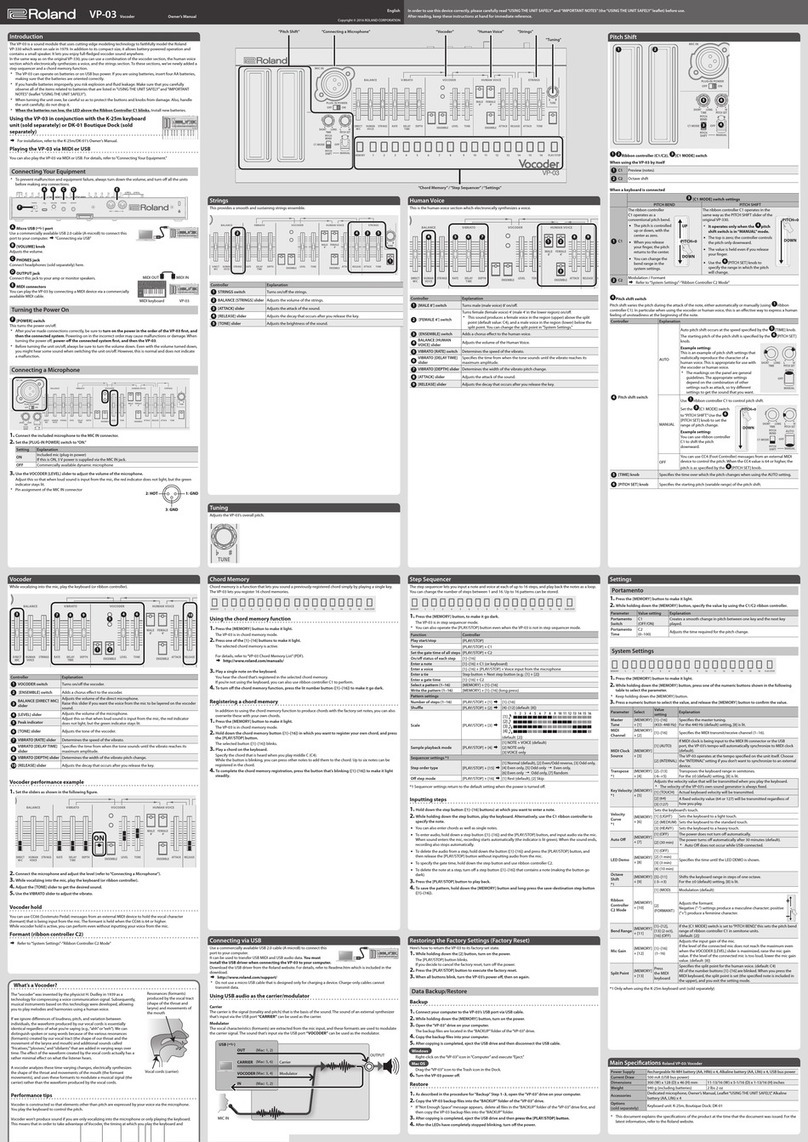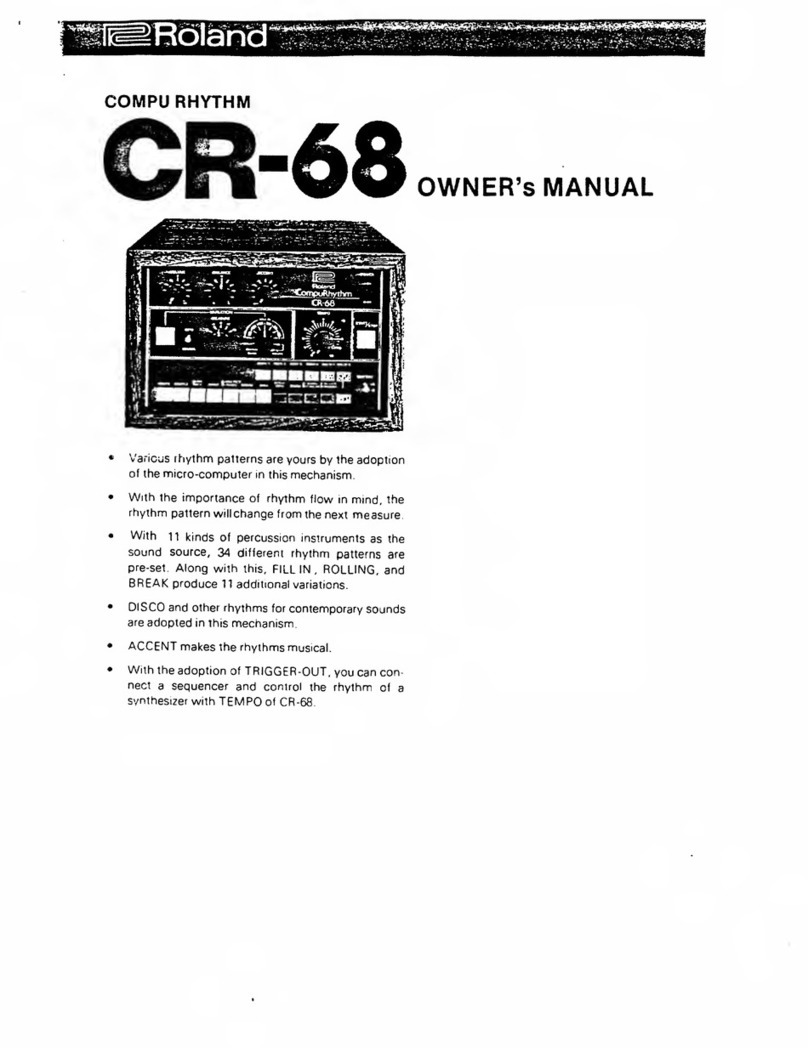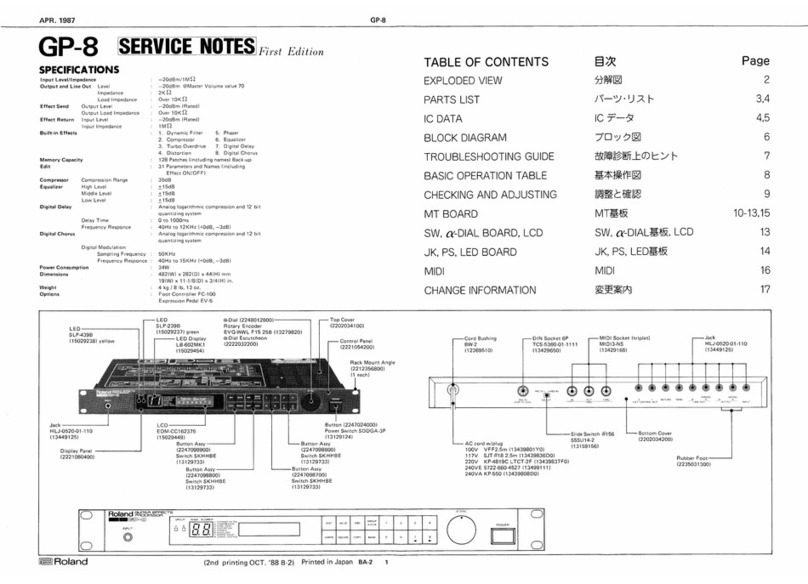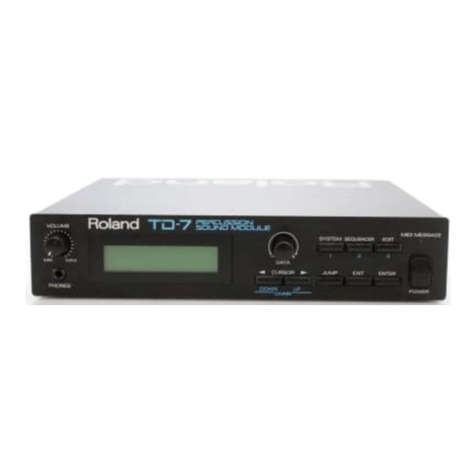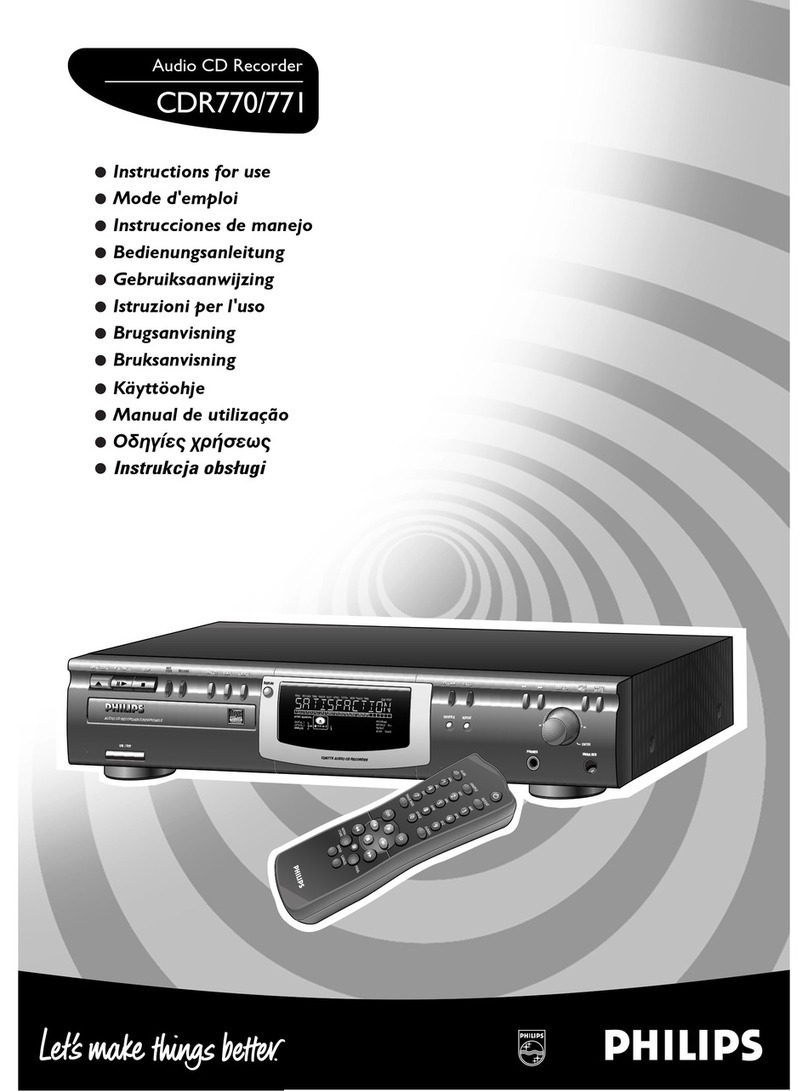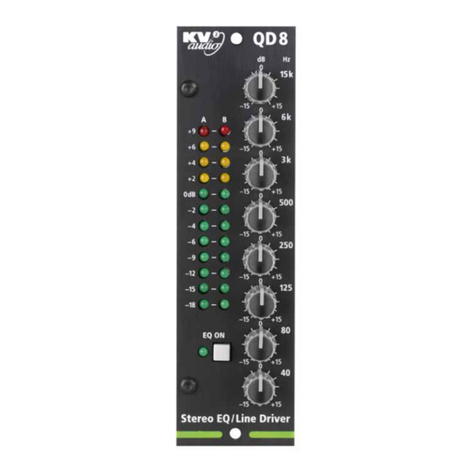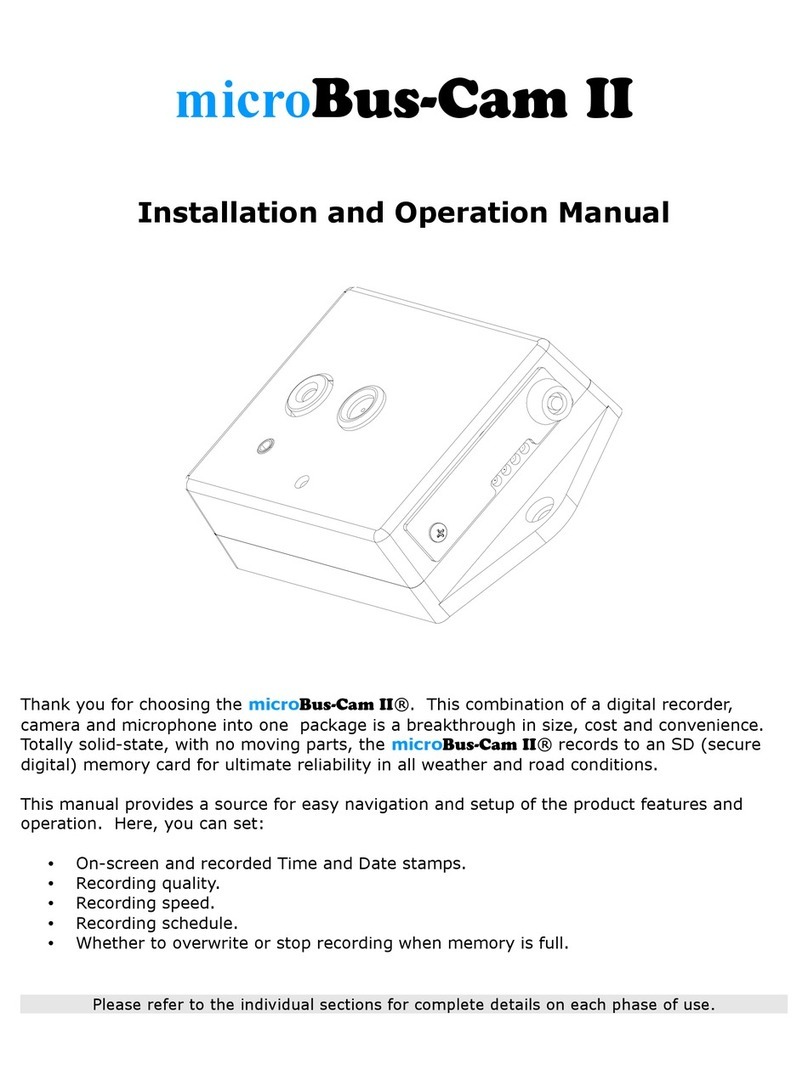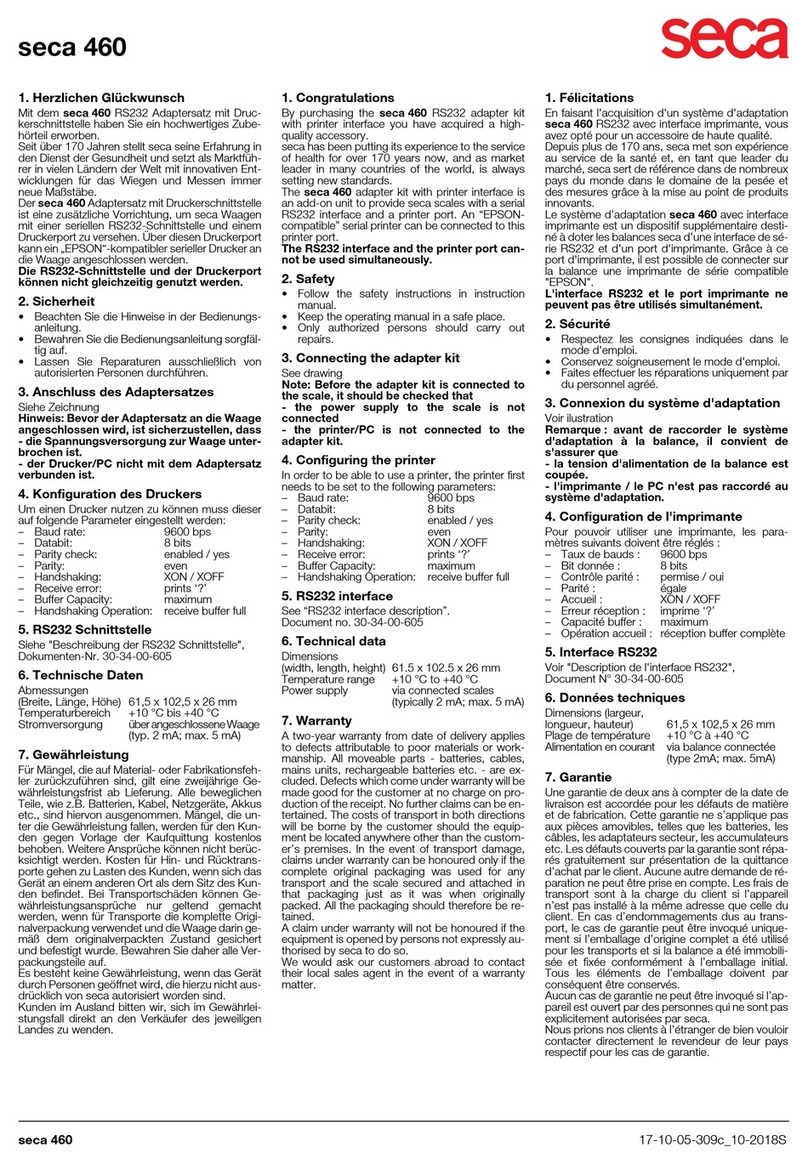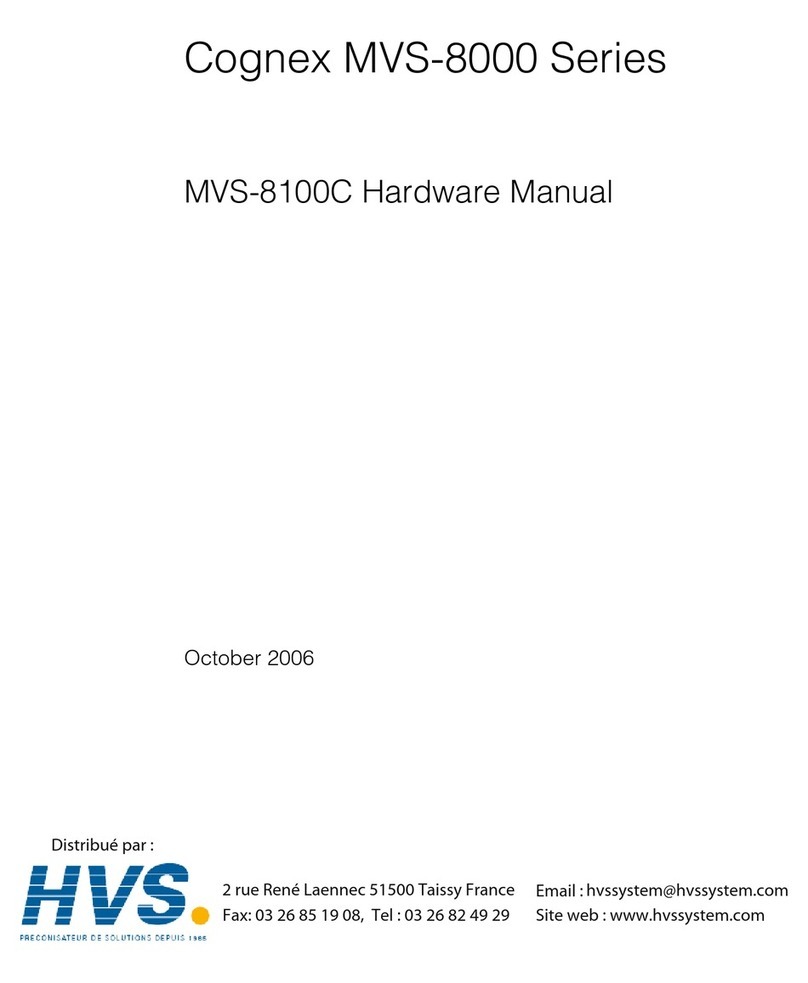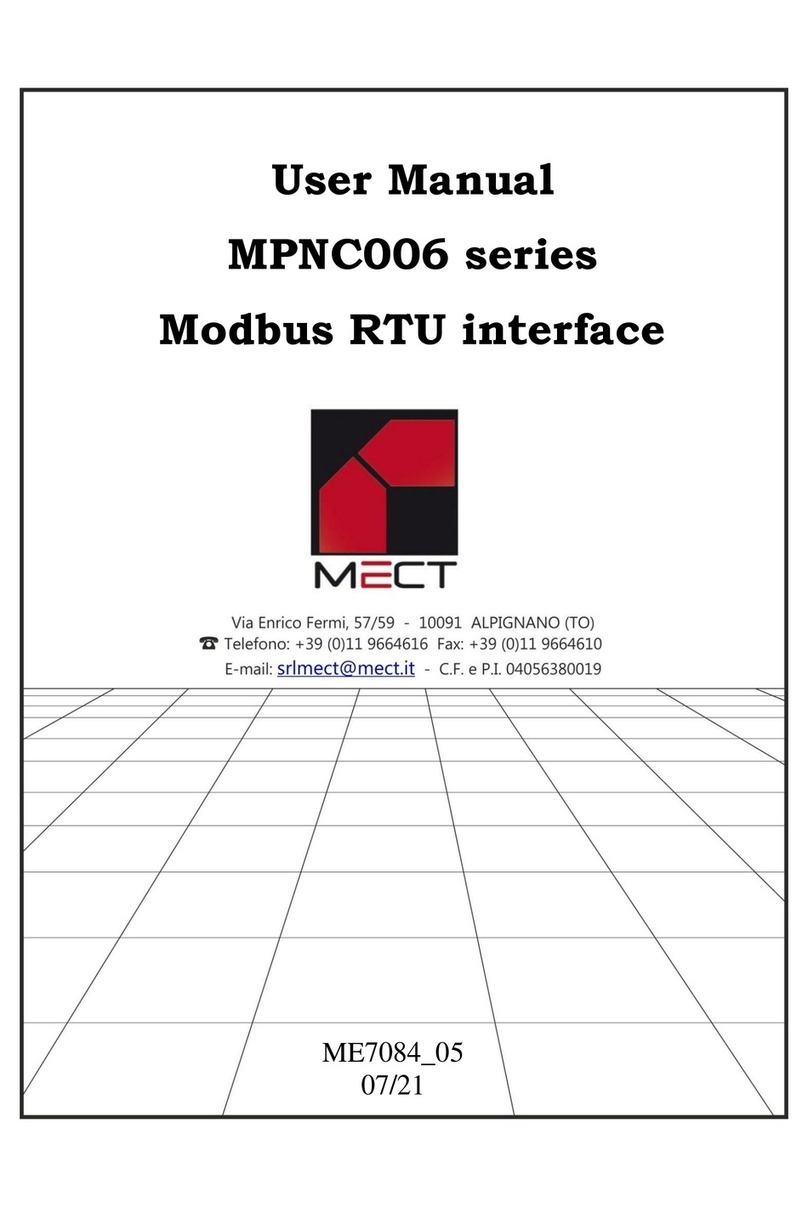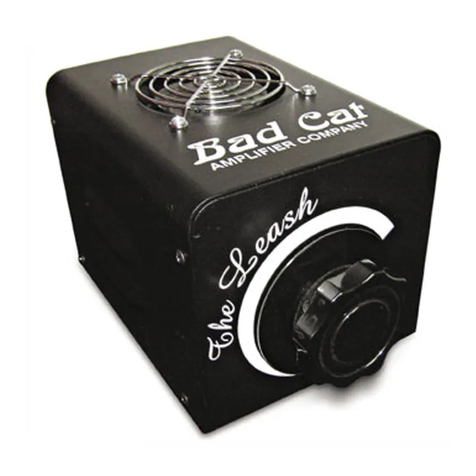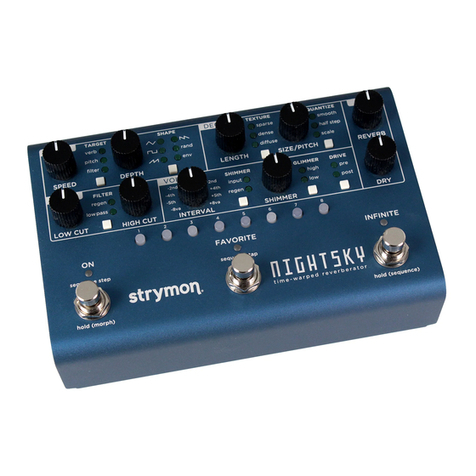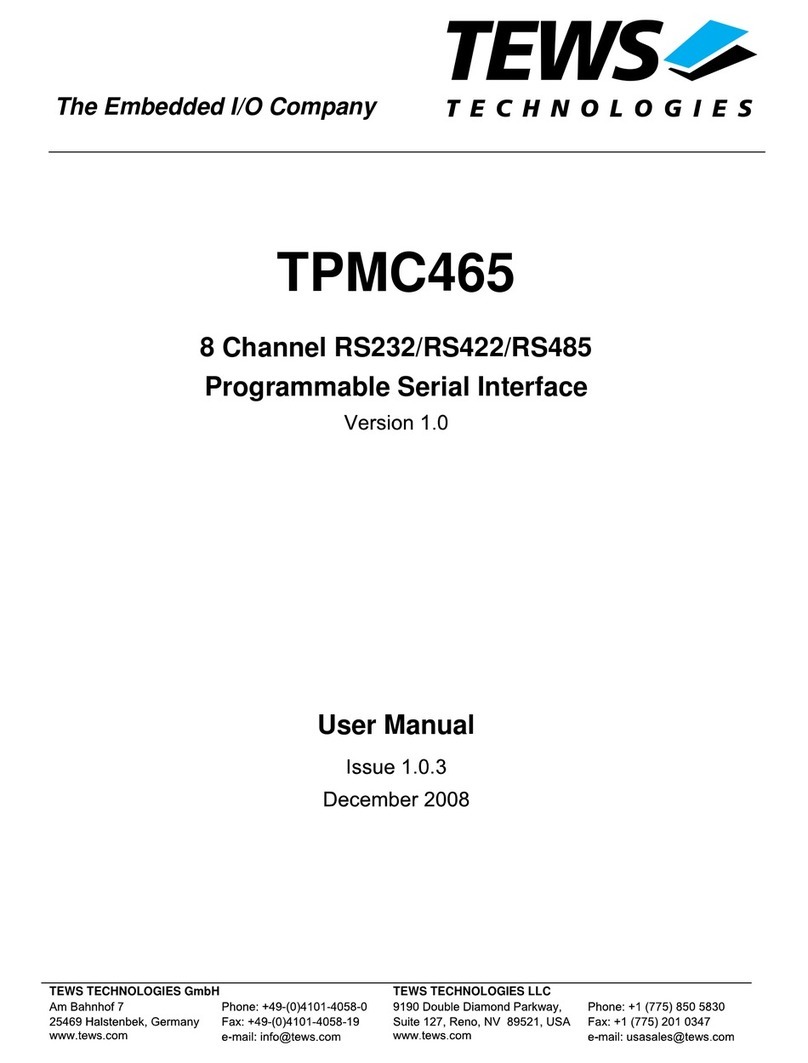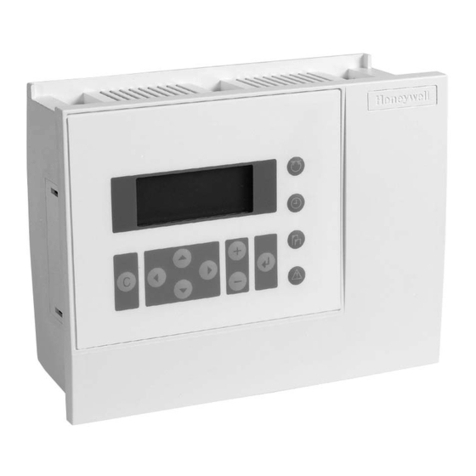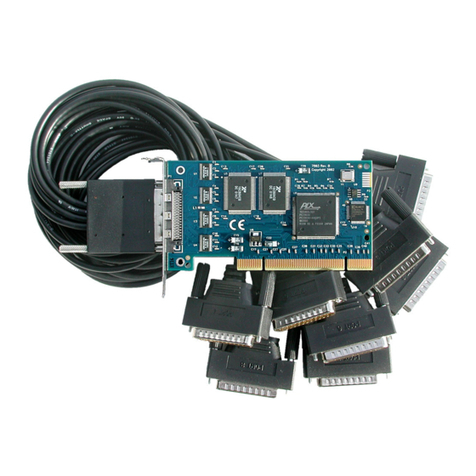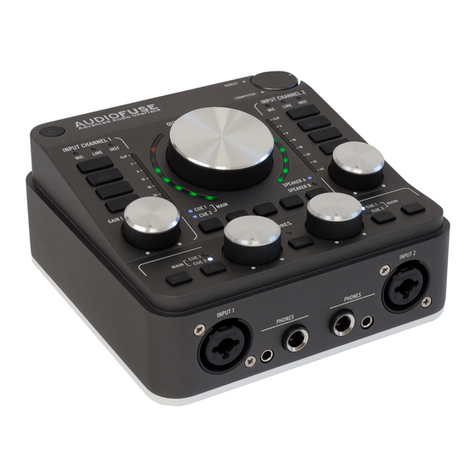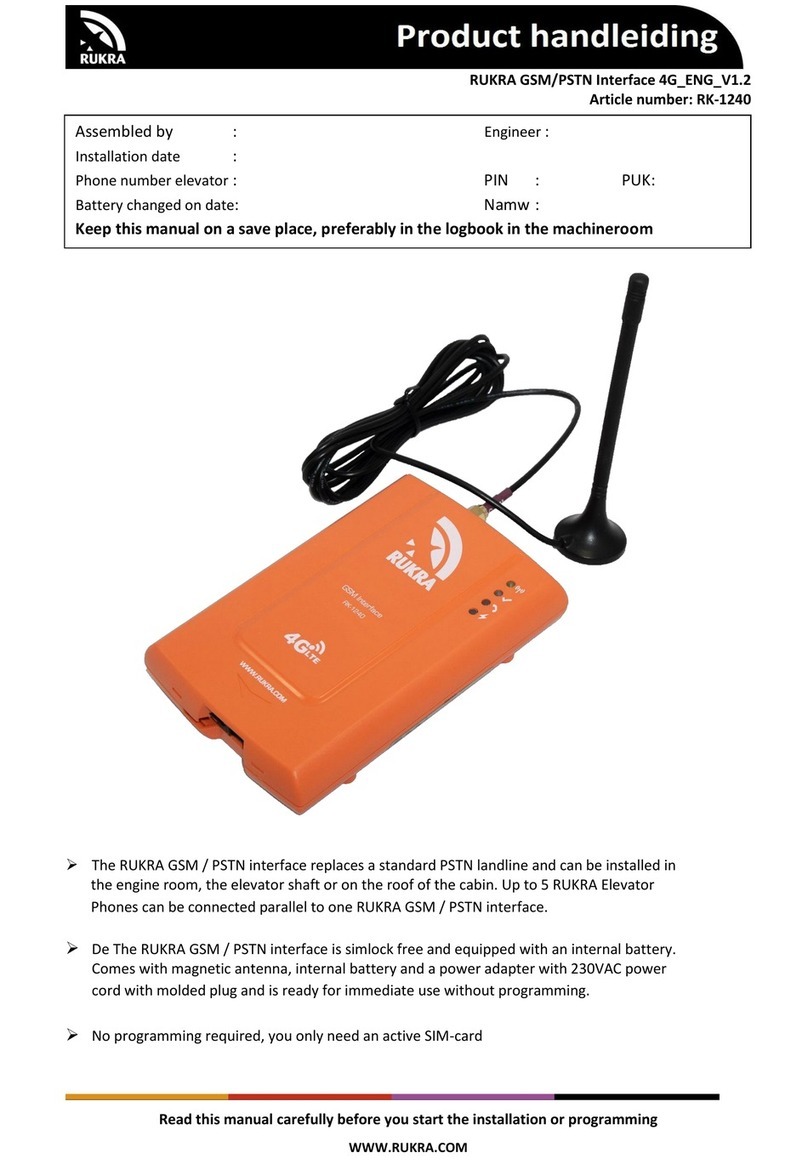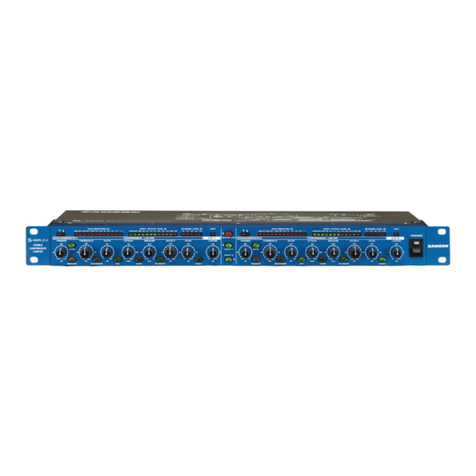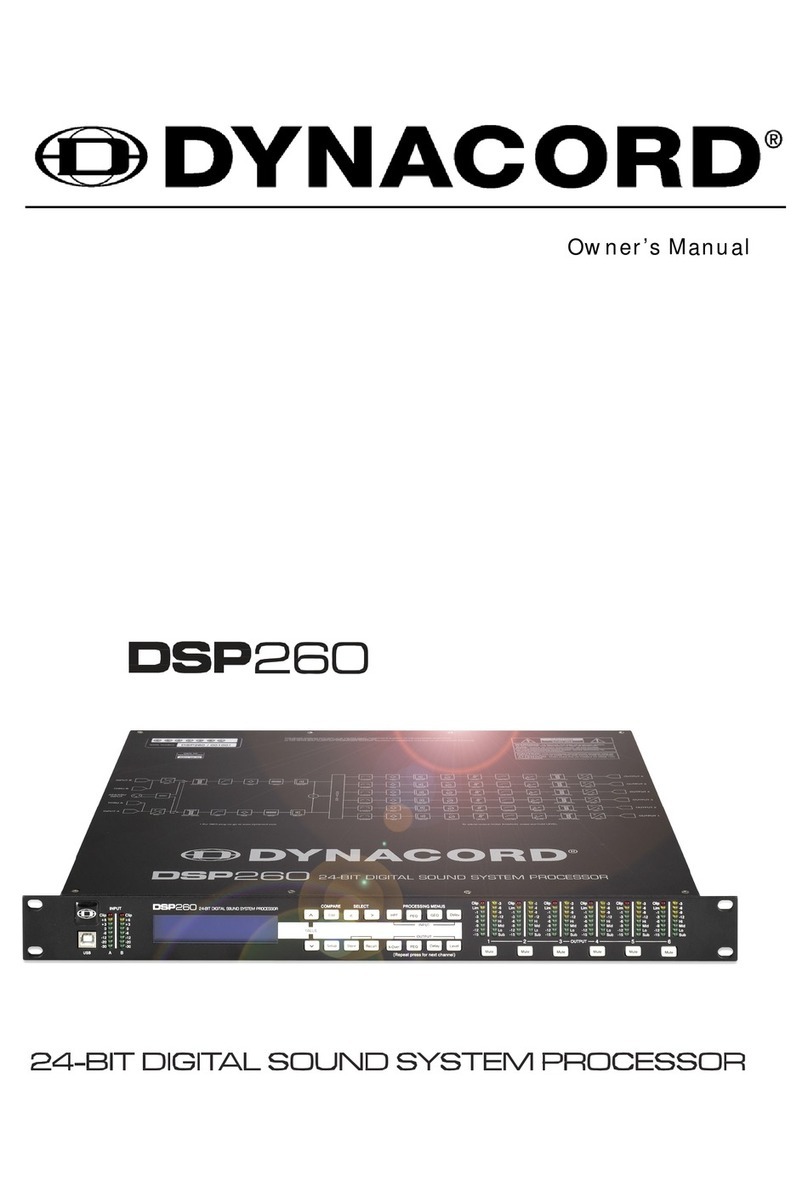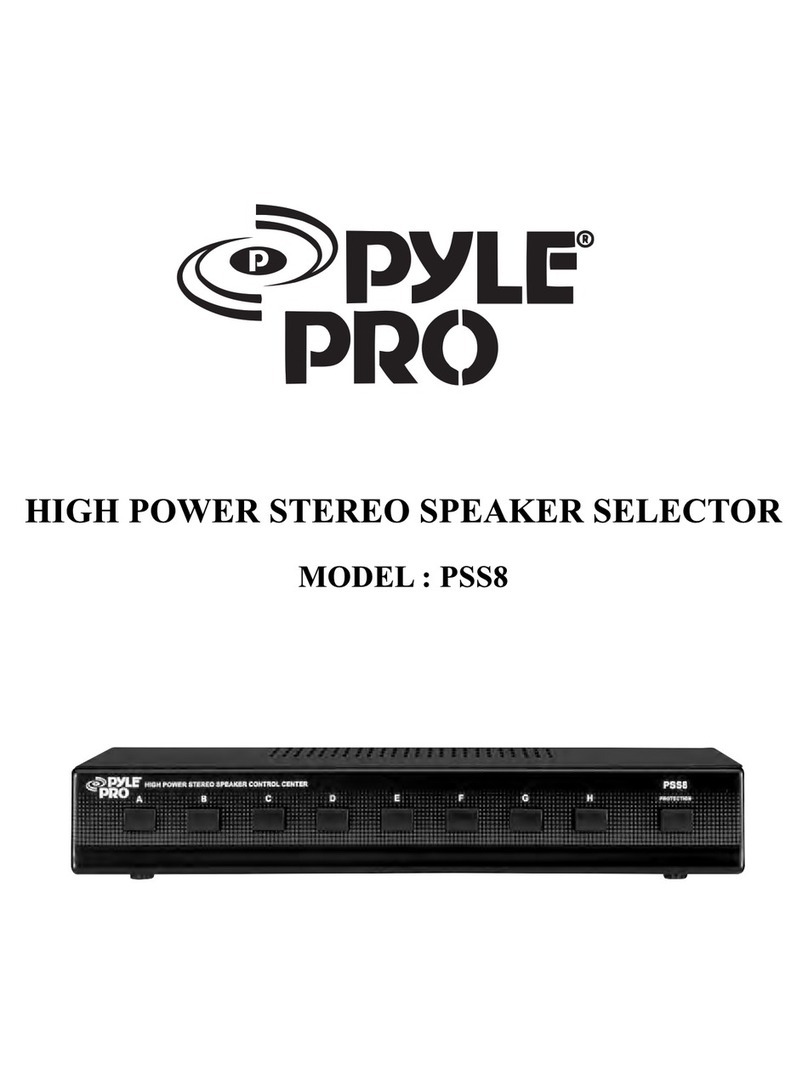
Detailed explanation of each part
Used for instructions intended to alert the
user to the risk of injury or material
damage should the unit be used
improperly.
* Material damage refers to damage or
other adverse effects caused with
respect to the home and all its
furnishings, as well to domestic animals
or pets.
Used for instructions intended to alert the
user to the risk of death or severe injury
should the unit be used improperly.
The symbol alerts the user to things that must be
carried out.The specific thing that must be done is
indicated by the design contained within the circle. In the
case of the symbol at left, it means that the power-cord
plug must be unplugged from the outlet.
The symbol alerts the user to important instructions or
warnings.The specific meaning of the symbol is
determined by the design contained within the triangle.In
the case of the symbol at left, it is used for general
cautions, warnings, or alerts to danger.
The symbol alerts the user to items that must never be
carried out (are forbidden).The specific thing that must
not be done is indicated by the design contained within
the circle. In the case of the symbol at left, it means that
the unit must never be disassembled.
About WARNING and CAUTION Notices About the Symbols
ALWAYS OBSERVE THE FOLLOWING
ÃCY-5 (Hi-hat, Ride, Crash)
NOTE
Continuous playing may cause dis-coloration of the
pad, but this will not aect the Pad’s function.
Pad face
Bow
Edge
OUTPUT jack
ÃPD-4 (Tom)
ÃAbout the memory clamp
The memory clamp aligns the pad at a xed height when it is attached.
When shipped, the memory clamp is attached at the recommended position for using the drum safely.
NOTE
If the memory clamp is moved or removed in order to adjust the position of the PDX-8 (snare), a greater
length of the rod may protrude; take care that the protruding rod does not cause injury.
(snare holder)
Memory clamp
PDX-8PDX-8
ÃHi-hat control pedal / kick pedal
You can check whether the pedal
is a kick pedal (KIK) or hi-hat
control pedal (HHC) by looking
at the sticker on the bottom.
Bottom of pedalBottom of pedal Sensor OUTPUT jack
Rear side
Pass cable through
slot
NOTE
Be sure to adjust the head tension of the pad before use.
ÃPDX-8 (Snare)
44
Adjusting the head tension
1. Adjust each tuning bolt a little at a time,
moving in order from one side to the opposite
side as shown in the illustration.
The appropriate amount of tension is one
that will provide approximately the same
striking response as on an acoustic drum.
2. Use the drum key to adjust the tension as
needed.
33
2255
6611
Quick Start
Turning the Power On/O
Turning the Power On
1. Connect headphones (sold separately) or amplied speakers (sold separately) to the TD-02.
* If amplied speakers are connected, minimize the volume of the amplied speakers.
* To prevent malfunction and equipment
failure, always turn down the volume, and
turn o all the units before making any
connections.
2. Press the [Ā] (POWER) button.
The power to the TD-02 is turned on.
3. If amplied speakers are connected, turn on the
power of the amplied speakers, and adjust the
volume.
4. Use the [Ć] [ć] (VOLUME) buttons on the TD-02
to adjust the volume.
Turning the Power O
1. If amplied speakers are connected to the TD-02, turn the volume of the amplied speakers all the way down
and then turn the unit o.
2. Long-press the [Ā] (POWER) button on the TD-02.
The power to the TD-02 is turned o.
* You must turn off the power by long-pressing the [Ā] (POWER) button. The settings are not saved if the
power supply is disconnected due to the power cord getting pulled out.
Playing
Selecting a Drum Kit
* A drum kit consists of sounds assigned to each pad.
1. Press the [ ] (DRUM KIT) button.
The DRUM KIT screen appears.
DRUM
01 Acoustic Jam
2. Use the [-] [+] buttons to select a drum kit.
3. Play the drums by striking the pads.
Playing with the Metronome
Here’s how you can play the drums while listening to the metronome.
1. Press the [ĉ] (METRONOME) button.
The metronome turns on, and the button blinks in time with the metronome tempo.
MEMO
You can also hold down the [ENTER] button and press the [ĉ] (METRONOME) button to turn the metronome
on/o without switching screens.
2. Press the [ĉ] (METRONOME) button again to stop the metronome.
Changing how the metronome sounds
1. In the metronome screen, use the [ã] [â] buttons to select the item (parameter) that you want to set.
2. Use the [–] [+] buttons to edit the value.
Parameter Value Explanation
ON/OFF ON, OFF Turns the metronome on/o.
Tempo 20–260 (bpm) Sets the tempo.
Level -INF–+6.0 dB Sets the volume.
Beat 1–9 (beat) Sets the number of beats per measure.
Rhythm
ń(half note)
Sets the interval of the metronome.
ņ(quarter notes)
ň(eighth notes)
Ŕ(eighth note triplets)
Ŋ(sixteenth notes)
Pan L30–CENTER–R30 Sets the stereo position.
Sound TYPE1–TYPE15 Sets the sound of the metronome.
LED Sync ON, OFF
Species whether the [
ĉ
] (METRONOME) button blinks in time with the
metronome (ON) or does not blink (OFF).
3. Press the [ ] (DRUM KIT) button to return to the DRUM KIT screen.
OUTPUT/PHONES jack
DC IN jack
Connect the included AC adaptor to
this jack.
TD-02TD-02
Using the Auto O Function
The power to this unit will be turned o automatically after a predetermined amount of time has passed
since it was last used for playing music, or its buttons or controls were operated (Auto Off function).
If you do not want the power to be turned o automatically, disengage the Auto O function.
• Unsaved data is lost when the power turns o. Before turning the power o, save the data that you want to keep.
• To restore power, turn the power on again.
ØFor details on Auto o function, see the 2D code printed on the product to view the“TD-02 Owner’s
Manual” (Roland website).
Playing drums is not only fun, but just about anyone can easily start playing — they make sound when you simply hit them! Let’s start playing drums using the wide variety of built-in sounds.
NOTE
PD-4 does not support the use of the rim-shot
technique.
Rod
Power Supply
• Place the AC adaptor so that the side with text is downward.
Placement
• Depending on the material and temperature of the surface on which
you place the unit, its rubber feet may discolor or mar the surface.
Repairs and Data
• Before sending the unit away for repairs, be sure to write down the
needed information. Although we will do our utmost to preserve the
data stored in your unit when we carry out repairs, in some cases,
such as when the memory section is physically damaged, restoration
of the stored content may be impossible. Roland assumes no liability
concerning the restoration of any stored content that has been lost.
Additional Precautions
• Any data stored within the unit can be lost as the result of equipment
failure, incorrect operation, etc. To protect yourself against the
irretrievable loss of data, be sure to write down the needed
information.
• Roland assumes no liability concerning the restoration of any stored
content that has been lost.
• Never strike or apply strong pressure to the display.
• This instrument is designed to minimize the extraneous sounds
produced when it’s played. However, since sound vibrations can
be transmitted through oors and walls to a greater degree than
expected, take care not to allow these sounds to become a nuisance
others nearby.
• The rubber portion of the striking surface is treated with a
preservative to maintain its performance. With the passage of time,
this preservative may appear on the surface as a white stain, or
reveal how the pads were struck during product testing. This does
not aect the performance or functionality of the product, and you
may continue using it with condence.
• Continuous playing may cause dis-coloration of the pad, but this will
not aect the pad’s function.
• Do not use connection cables that contain a built-in resistor.
Intellectual Property Right
• The copyright of content in this product (the sound waveform data,
style data, accompaniment patterns, phrase data, audio loops and
image data) is reserved by Roland Corporation.
• Purchasers of this product are permitted to utilize said content
(except song data such as Demo Songs) for the creating, performing,
recording and distributing original musical works.
• Purchasers of this product are NOT permitted to extract said
content in original or modied form, for the purpose of distributing
recorded medium of said content or making them available on a
computer network.
• The Bluetooth® word mark and logos are registered trademarks
owned by Bluetooth SIG, Inc. and any use of such marks by Roland
is under license.
• This product includes third party open source software.
Copyright © 2009-2018 Arm Limited. All rights reserved.
Licensed under the Apache License, Version 2.0 (the“License”);
You may obtain a copy of the License at
http://www.apache.org/licenses/LICENSE-2.0
• Roland, V-Drums are either registered trademarks or trademarks of
Roland Corporation in the United States and/or other countries.
• Company names and product names appearing in this document
are registered trademarks or trademarks of their respective owners.
USING THE UNIT SAFELY IMPORTANT NOTES
WARNING
Concerning the Auto O function
The power to this unit will be turned o automatically
after a predetermined amount of time has passed
since it was last used for playing music, or its buttons
or controls were operated (Auto O function). If you
do not want the power to be turned o automatically,
disengage the Auto O function.
Use only the supplied AC adaptor and the correct voltage
Be sure to use only the AC adaptor supplied with the
unit. Also, make sure the line voltage at the installation
matches the input voltage specied on the AC adaptor’s
body. Other AC adaptors may use a dierent polarity, or
be designed for a dierent voltage, so their use could
result in damage, malfunction, or electric shock.
Use only the supplied power cord
Use only the attached power cord. Also, the supplied
power cord must not be used with any other device.
CAUTION
Cautions when moving this unit
If you need to move the instrument, take note of the
precautions listed below. At least two persons are
required to safely lift and move the unit. It should be
handled carefully, all the while keeping it level. Make
sure to have a rm grip, to protect yourself from injury
and the instrument from damage.
• Check to make sure the bolts and hand knobs securing the stand
have not become loose. Fasten them again securely whenever you
notice any loosening.
• Disconnect the power cord.
• Disconnect all cords coming from external devices.
• Disconnect the connection cable of the kick pedal.
• Disconnect the connection cable of the hi-hat control pedal.
Take care so as not to get ngers pinched
When handling the following moving parts, take care
so as not to get ngers, toes, etc., pinched. Whenever
a child uses the unit, an adult should be on hand to
provide supervision and guidance.
• Hi-hat control pedal
• Kick pedal
• Bottom of the cymbal pad (see gure)
• Drum sound module holder
(see gure)
Keep small items out of the reach of children
To prevent accidental ingestion of the parts listed below,
always keep them out of the reach of small children.
• Included Parts
Cymbal nut
• Removable Parts
Screws, Bolts, Bluetooth ADAPTOR jack’s cover, CR2 plug’s cap
IMPORTANT: THE WIRES IN THIS MAINS LEAD ARE COLOURED IN ACCORDANCE WITH THE FOLLOWING CODE.
BLUE:
BROWN:
As the colours of the wires in the mains lead of this apparatus may not correspond with the coloured markings identifying
the terminals in your plug, proceed as follows:
The wire which is coloured BLUE must be connected to the terminal which is marked with the letter N or coloured BLACK.
The wire which is coloured BROWN must be connected to the terminal which is marked with the letter L or coloured RED.
Under no circumstances must either of the above wires be connected to the earth terminal of a three pin plug.
NEUTRAL
LIVE
For the U.K.
For the USA
SUPPLIER’S DECLARATION OF CONFORMITY
Compliance Information Statement
Model Name :
Type of Equipment :
Responsible Party :
Address :
Telephone :
Model Name :
Type of Equipment :
Responsible Party :
Address :
Telephone :
FP-80
Digital Piano
Roland Corporation U.S.
5100 S. Eastern Avenue Los Angeles, CA 90040-2938
(323) 890-3700
TD-02
Drum Sound Module
Roland Corporation U.S.
5100 S. Eastern Avenue Los Angeles, CA 90040-2938
(323) 890-3700
For EU countries
English For information on AC adaptors that can be used with this product, refer to the Roland website.
German Informationen zu AC-Adaptern, die mit diesem Produkt verwendet werden können, nden Sie auf der
Roland-Internetseite.
French Pour savoir quels adaptateurs secteur utiliser avec ce produit, consultez le site Web de Roland.
Italy Per informazioni sui trasformatori in CA che possono essere usati con questo prodotto, consultate il sito
Web Roland.
Spanish Para obtener información sobre los adaptadores de CA que se pueden usar con este producto, consulta el
sitio web de Roland.
Portuguese Para informações sobre adaptadores AC que podem ser usados com este produto, consulte o site da
Roland.
Dutch Raadpleeg de website van Roland als u meer wilt weten over netstroomadapters die u met dit product
kunt gebruiken.
Hungarian A termékhez használható hálózati adapterekkel (AC) kapcsolatos információkért keresse fel a Roland
weboldalát.
Czech Více informací o AC adaptérech, které mohou být využity s tímto produktem, naleznete na internetové
stránce společnosti Roland.
Polish Aby dowiedzieć się do jakich zasilaczy sieciowych można podłączyć ten produkt, zajrzyj na stronę
internetową rmy Roland.
Romanian Pentru informații privind adaptoarele de c.a. care pot utilizate cu acest produs, consultați site-ul web
Roland.
Slovak Informácie o sieťových adaptéroch na striedavý prúd, ktoré sa dajú použiť s týmto produktom, nájdete na
webovej stránke spoločnosti Roland.
Danish For oplysninger om vekselstrømsadaptere, der kan bruges sammen med dette produkt, se Roland-
webstedet.
Finnish Tietoja tämän tuotteen kanssa käytettävistä virtalähteistä saa Rolandin verkkosivustosta.
Swedish Information om vilka nätadaptrar som kan användas med den här produkten nns på Rolands webbplats.
Norwegian For informasjon om vekselstrømadaptere som kan brukes med dette produktet, se Roland-websiden.
http://roland.cm/ac_adaptor
NOTE
Note that the TD-02 does not oer Bluetooth® functionality. You’ll need to attach the Boss
Bluetooth® Audio MIDI Dual Adaptor (BT-DUAL, sold separately) to use Bluetooth.
Head
OUTPUT jack
Hand knob
Head
Tuning bolt
Hoop rubber
OUTPUT jack Shell
Holder
